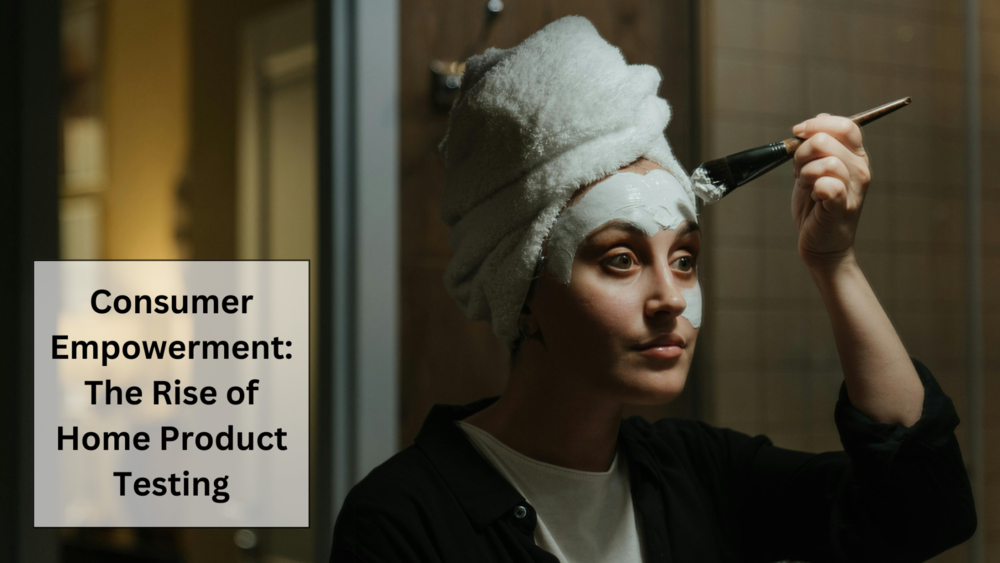- Home
- Articles
- Architectural Portfolio
- Architectral Presentation
- Inspirational Stories
- Architecture News
- Visualization
- BIM Industry
- Facade Design
- Parametric Design
- Career
- Landscape Architecture
- Construction
- Artificial Intelligence
- Sketching
- Design Softwares
- Diagrams
- Writing
- Architectural Tips
- Sustainability
- Courses
- Concept
- Technology
- History & Heritage
- Future of Architecture
- Guides & How-To
- Art & Culture
- Projects
- Interior Design
- Competitions
- Jobs
- Store
- Tools
- More
- Home
- Articles
- Architectural Portfolio
- Architectral Presentation
- Inspirational Stories
- Architecture News
- Visualization
- BIM Industry
- Facade Design
- Parametric Design
- Career
- Landscape Architecture
- Construction
- Artificial Intelligence
- Sketching
- Design Softwares
- Diagrams
- Writing
- Architectural Tips
- Sustainability
- Courses
- Concept
- Technology
- History & Heritage
- Future of Architecture
- Guides & How-To
- Art & Culture
- Projects
- Interior Design
- Competitions
- Jobs
- Store
- Tools
- More
Consumer Empowerment: The Rise of Home Product Testing

Imagine a group of product developers painstakingly creating a new shampoo recipe, poring over market research data, and allocating substantial funds to manufacture. The shampoo hits the shelves and doesn’t connect with customers, adding to the vast majority of new product failure statistics. This case underscores the challenges businesses face in understanding the wants and preferences of their customers.
In the middle of this battle, nonetheless, a revolutionary movement has surfaced: in-home product testing (IHUT). This strategy of home product testing enables businesses to interact directly with customers, giving them prototypes to use on a regular basis and collecting insightful input.
It has completely revolutionized consumer empowerment, giving ordinary people a voice in product creation like never before. Companies are looking more and more to IHUT as a way to comprehend and meet the needs of their target market as they work to avoid becoming just another statistic in the world of unsuccessful products.
Table of Contents
ToggleInterpreting In-Home Usage Testing (IHUT)
In a market research technique known as “in-home usage testing,” participants are given products to use in their own homes for a predetermined amount of time. Unlike conventional product testing carried out in controlled settings, IHUT enables users for home product testing, therefore offering more genuine and trustworthy input.
IHUT’s significance lies in its ability to capture real usage scenarios and provide insights that are sometimes overlooked in laboratory environments. Focus groups and lab-based tests represent conventional product testing techniques that often create artificial settings influencing customer behavior.

On the other hand, IHUT, by placing the product in the natural setting of the user, yields more precise and comprehensive feedback. This distinction is crucial as it informs businesses about how their products perform in real-world settings, ultimately guiding better decisions in new product development.
Consumer product testing has undergone tremendous evolution throughout time. During the early 20th century, firms primarily conducted product testing internally or in controlled settings with minimal consumer involvement. Realistic testing environments were clearly needed as consumer preferences and market competition increased.
IHUT subsequently developed gradually in the late 20th century as businesses looked for sincere input from customers utilizing their products in real-world situations. Over time, with the advancement of technology and the growing emphasis on consumer-centric design, IHUT has become a standard procedure in the product development process.
Key terms associated with this field include:
- IHUT (In-Home Usage Testing): A technique where products are given to consumers to use at their homes, providing genuine feedback.
- ihutstudy: Research carried out to collect information on in-home usage; sometimes used synonymously with IHUT.
- Product Testing: the more general process of product evaluation, including IHUT, focus groups, and lab tests.
- Consumer Product Testing: Testing aimed especially at determining how customers will respond to and choose items.
Benefits of In-Home Usage Testing
For Consumers
- Empowerment: Consumers have a direct influence on product growth and development, influencing the features and enhancements based on their feedback.
- Influencing Product Development: By sharing their experiences, consumers help create products to better fit their wants and preferences.
- Trying New items: Participants get the opportunity to try new items before they enter the market, frequently earning free samples or other incentives.
For Companies
- Real-World Feedback: IHUT gives firms with insights into how goods are utilized in everyday settings, leading to more accurate and relevant feedback.
- Improved Product Quality: Detailed consumer feedback helps uncover problems and opportunities for improvement, resulting in higher-quality products.
- Stronger Consumer Relationships: Engaging with consumers using IHUT develops loyalty and trust, as consumers feel appreciated and heard.
For the Market
- Better Products: The insights gathered by IHUT lead to the development of products that better fulfill consumer wants and expectations.
- Increased Competition: As companies struggle to match the demands of well-informed consumers, competition intensifies, leading to higher standards across the industry.
- Innovation Driven by Consumer Needs: Feedback from real users drives innovation, as companies build new features and products based on true consumer desires and difficulties.
IHUT benefits customers by giving them a voice, firms by enhancing product quality and relationships, and the market by fostering better products and increased innovation.
Challenges and Considerations
Companies must employ adequate data protection measures to preserve participants’ personal information. This involves secure data storage, encryption, and compliance with privacy standards. Transparency about how data will be utilized and promises of confidentiality are vital to establish and keep participants’ trust. Companies should provide transparent privacy policies and acquire informed consent from participants.
To guarantee the feedback is relevant to a broad audience, companies need to recruit a diverse and representative set of participants. This includes evaluating numerous demographics such as age, gender, ethnicity, economic levels, and geographic areas. Careful screening and selection techniques are required to avoid biases that can skew the feedback. It’s crucial to verify that the sample appropriately reflects the target market.
Participants’ feedback can be influenced by personal preferences or other variables. Companies need to plan their research to reduce these biases by, where appropriate, adopting blind trials and randomized testing. Standardizing the feedback process through standardized questionnaires and regular check-ins will assist ensure that the data obtained is consistent and credible.
Conducting IHUT might be expensive due to the costs of product distribution, participant incentives, and data processing. Companies need to budget wisely and assess the return on investment. Coordinating the delivery of items, monitoring participant interactions, and collecting feedback can be complex and resource-intensive. Efficient planning and the use of specialist software solutions can assist handle these logistics effectively.
The Future of Home Product Testing Technological Advancements
The incorporation of smart devices and the Internet of Things (IoT) will permit more precise tracking and data collecting during IHUT. Smart appliances and wearables can offer real-time usage data, boosting the accuracy and depth of feedback.
VR and AR technologies may imitate real-world surroundings for product testing, giving a hybrid method that combines the benefits of in-home and controlled environment testing. This can be particularly useful for products that are difficult to test in ordinary residential settings.
AI and machine learning can analyze enormous amounts of feedback data more rapidly, revealing patterns and insights that could be missed by human analysts. These technologies can also personalize the testing experience by adapting items and instructions to specific participants.
IHUT can be expanded to the healthcare business for testing medical devices, wellness goods, and health monitoring apps. This real-world testing is vital for ensuring safety, efficacy, and user-friendliness. Automotive companies can use IHUT to test in-car technologies and accessories, gaining insights into user experience and safety features in real driving settings.
Smart Home Products
The rising market for smart home goods can benefit from IHUT by testing interoperability, simplicity of use, and functionality in varied home contexts. As customers become more conscious of their effect on product creation, their demand for participation in IHUT will expand. This tendency will lead organizations to prioritize consumer-centric testing methodologies. Consumers are seeking individualized products and experiences. IHUT allows organizations to get specific input that can inform the customization of products to better fit individual tastes.
Industry analysts anticipate that IHUT will become a crucial aspect of product development across various sectors. The emphasis on consumer feedback will stimulate innovation and improve product quality. The market for IHUT services is likely to develop dramatically as more firms grasp the value of real-world testing. This expansion will be backed by advancements in technology and an increased focus on consumer empowerment.
Future IHUT processes will likely involve sustainability principles, such as decreasing waste and assuring ethical participant treatment. Companies would be challenged to reconcile innovation with environmental and social responsibilities.
Conclusion
A game-changing force in product development, in-home usage testing (IHUT) provides a sophisticated insight of customer preferences that is frequently overlooked by more conventional testing techniques. We’ve learned about the whole IHUT process from participant recruiting to thorough feedback gathering during our investigation, which emphasizes the many advantages it offers for businesses, consumers, and the market at big.
IHUT continues to be a powerful instrument for improving product quality and building customer trust even in the face of difficulties like protecting consumer privacy and controlling expenses. Driven by an increasingly empowered and involved customer base, the convergence of technical breakthroughs and wider applications across industries looks to further elevate this testing strategy going ahead.
The heart of IHUT is its ability to empower customers by letting them directly shape the items they use and by creating a market where contentment and innovation coexist. We strongly advise readers to seize chances to take part in IHUTs, understanding their critical role in determining the direction of consumer-centric product development, and to back businesses that respect and give priority to customer input, so advancing a market that values quality, innovation, and customer happiness.
Frequently Asked Questions(FAQs)
1. What is in-home usage testing (IHUT)?
In-home usage testing (IHUT) is a consumer product testing technique wherein a product is used normally in the homes of a few chosen participants. This method enables businesses to get real-life usage situations’ honest input on the performance, usability, and happiness of their products.
2. How do I sign up for an IHUT study?
You can register with businesses or market research agencies that carry out these exams to take part in an IHUT research. Look for openings on company websites or in customer panels. Usually, participants are chosen according to particular standards to guarantee they are part of the intended market for the product under evaluation.
3. What advantages comes with taking part in an IHUT?
IHUT study volunteers can test free products and offer insightful comments that helps shape future product development. For their time and work, they might also get paid. The experience enables customers to actively influence the items they use.
illustrarch is your daily dose of architecture. Leading community designed for all lovers of illustration and #drawing.
Submit your architectural projects
Follow these steps for submission your project. Submission FormLatest Posts
Dependable Service for Everyday Appliance Problems
When a washer stalls mid-cycle or a fridge warms up, you need...
8 Essential Web-Based Mapping Tools for Modeling Sea Level Rise and Flood Impacts
As climate change accelerates, flood risk and sea level rise have become...
How Sydney’s Architecture Responds to Climate, Light, and Lifestyle
Sydney’s architecture has never been driven by form alone. It evolves through...
Shipping Containers as Functional Infrastructure on Construction Sites
Construction sites are temporary by definition, yet the systems that support them...












Leave a comment